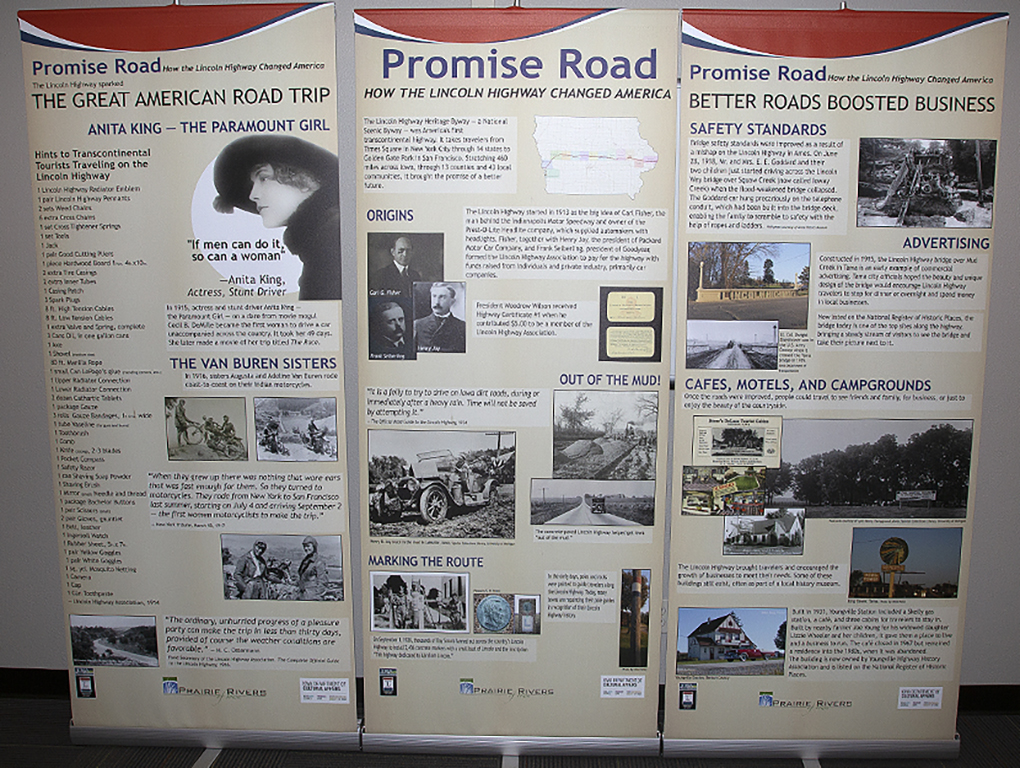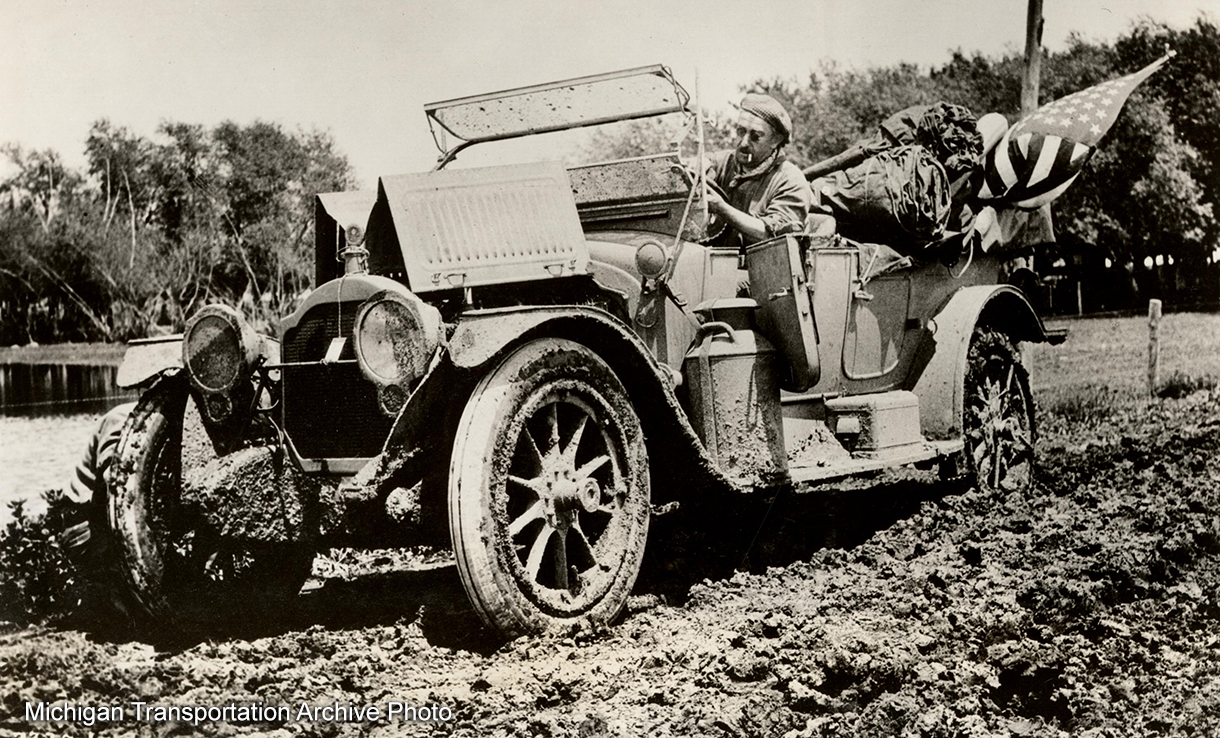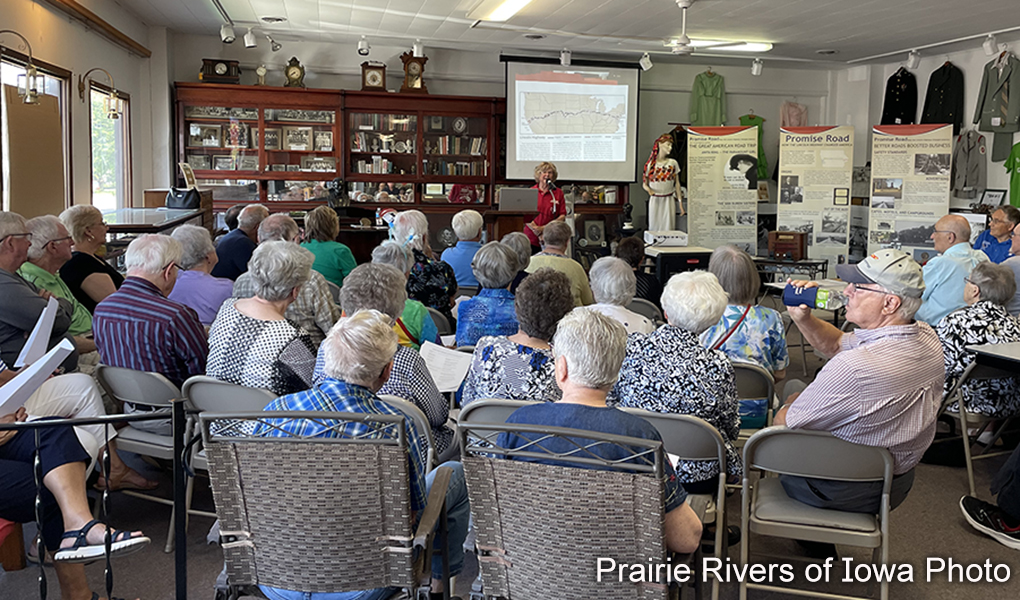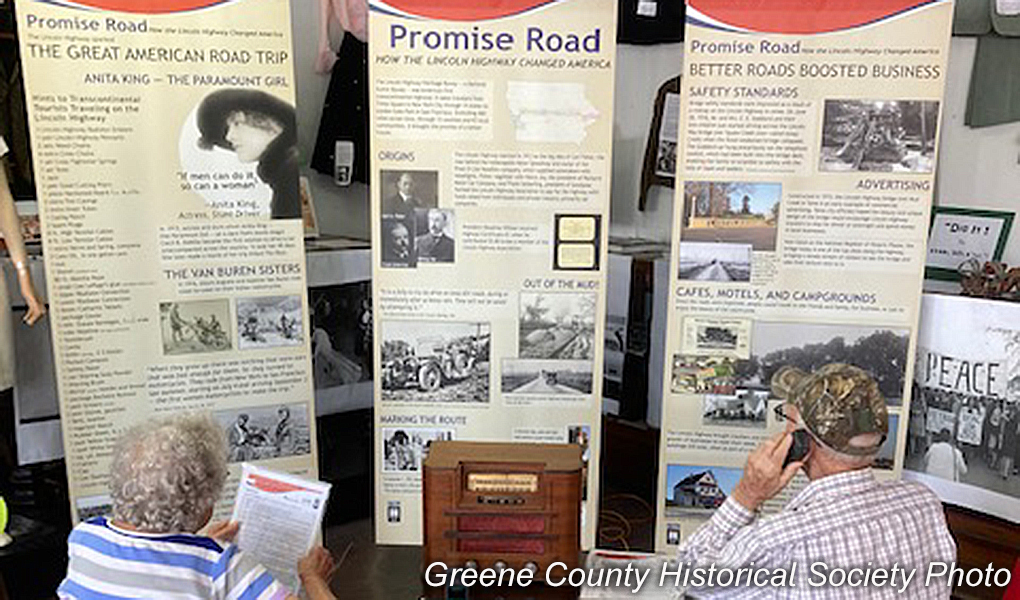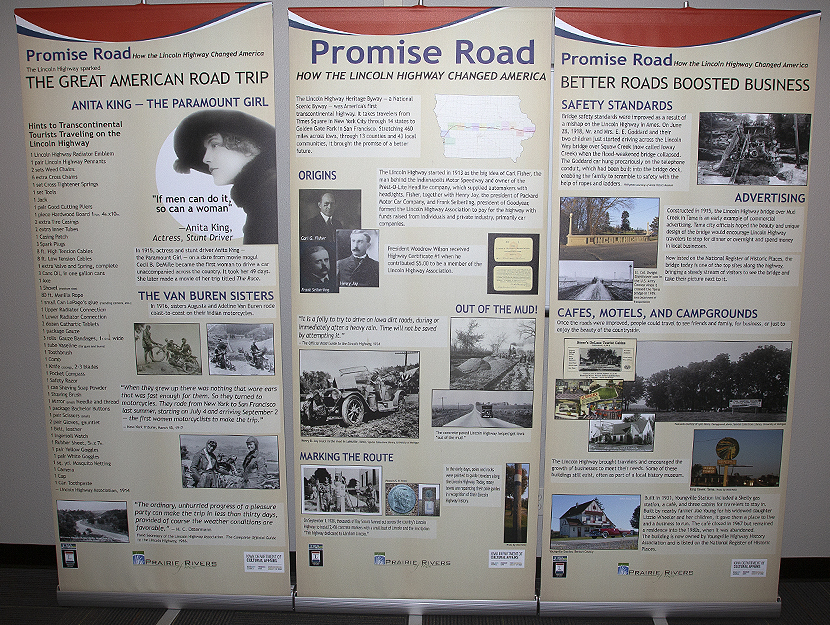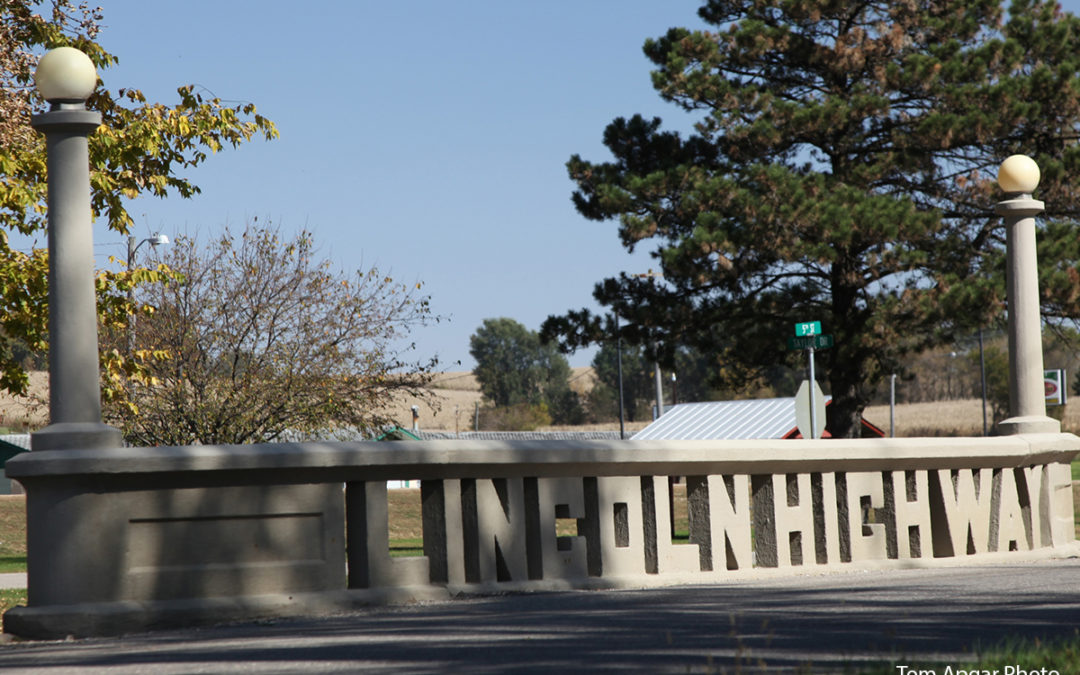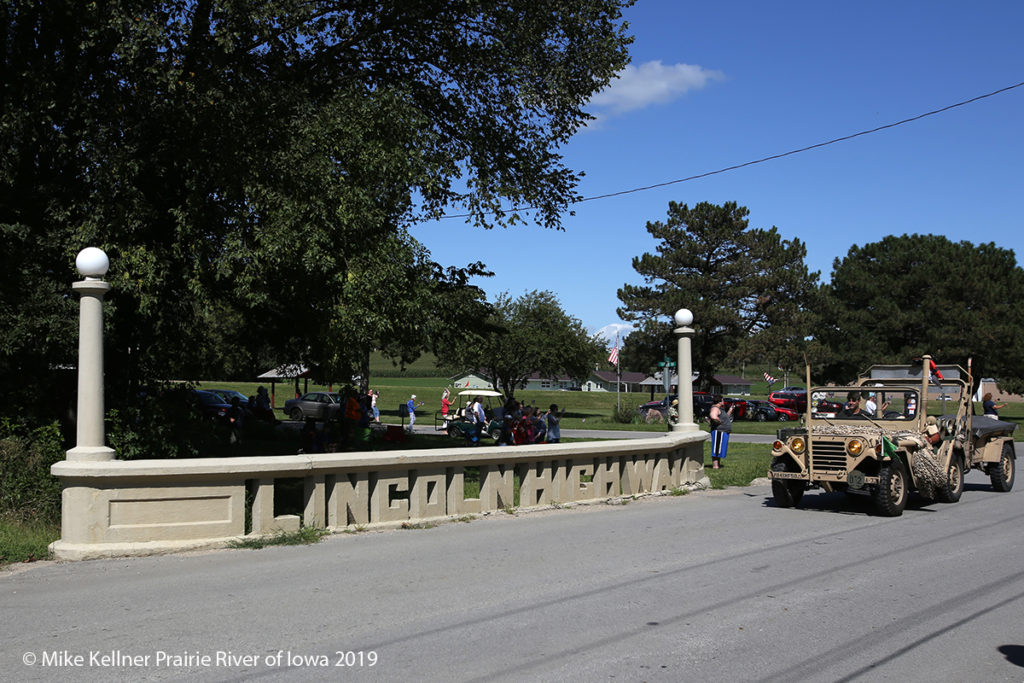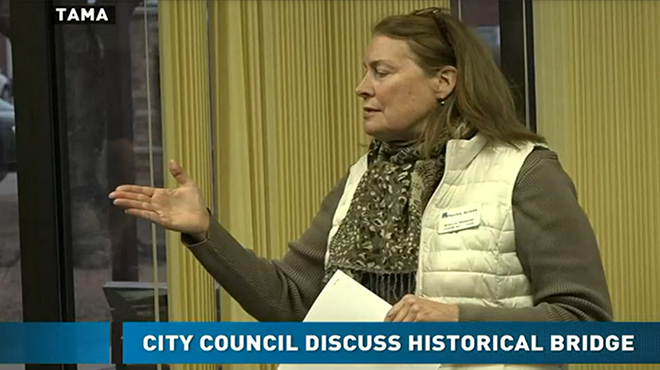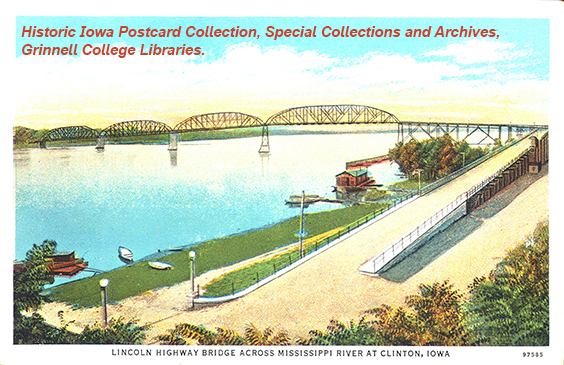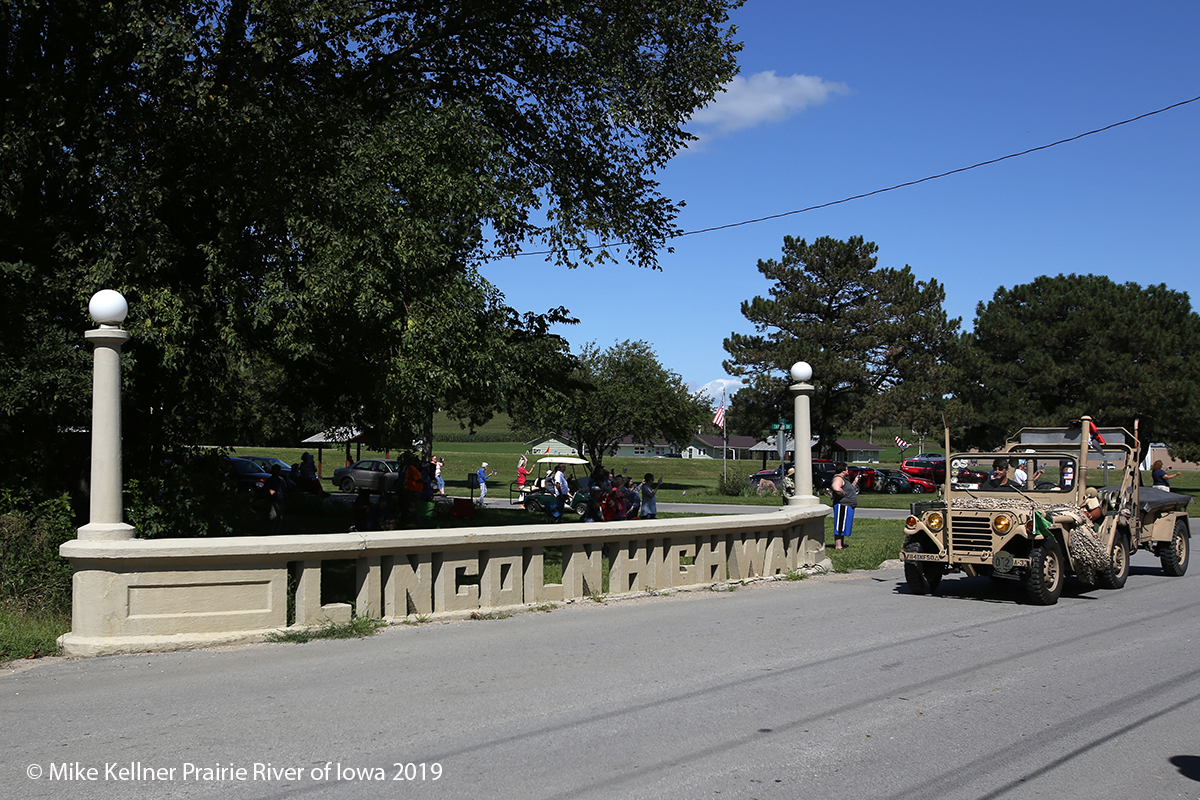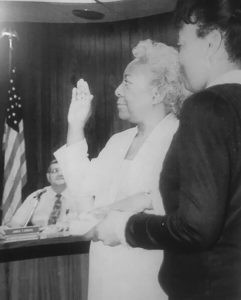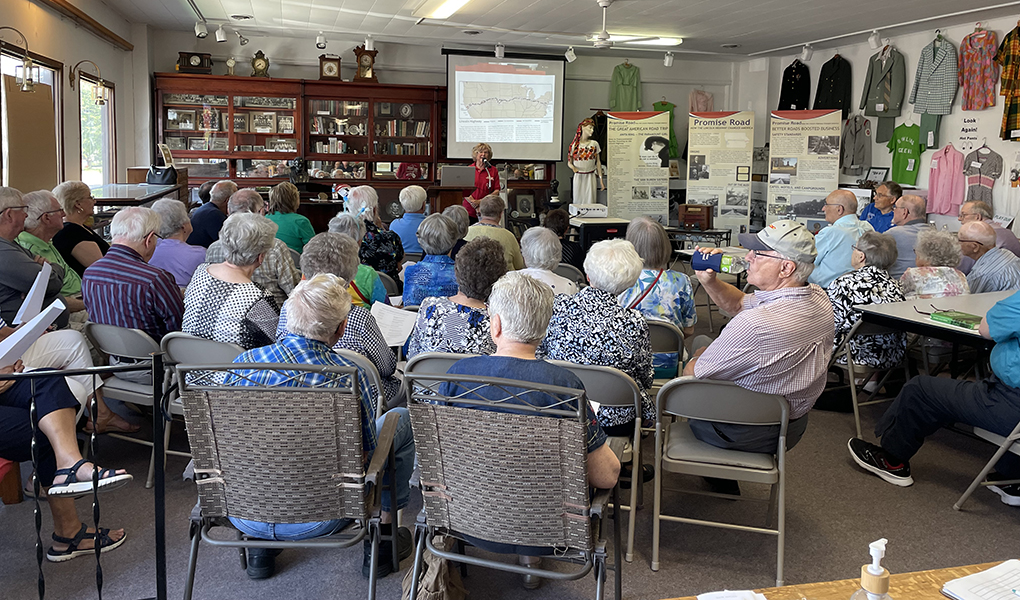
Promise Road: How the Lincoln Highway Changed America
Currently, the display is at the Council Bluffs Public Library, 400 Willow Ave, Council Bluffs, IA.
Promise Road tells the story of how the Lincoln Highway knit together the nation in the early days of the automobile and helps communities grow. It was created by Prairie Rivers of Iowa with funding from the Iowa Department of Cultural Affairs, a grant from the Greater Iowa Credit Union, and support from the Iowa Department of Transportation.
“Many of us have driven the Lincoln Highway but haven’t realized its significance for the unfolding of our country’s modern history. This exhibition tells that story,” said Shellie Orngard, the Lincoln Highway Heritage Byway coordinator.
The building of the Lincoln Highway was initiated in 1913, when most people traveled by foot or by horse and the roads were mud or gravel. America’s first coast-to-coast highway, the Lincoln Highway starts in Times Square, New York City, and travels through 14 states, ending at Golden Gate Park in San Francisco, overlooking the Pacific Ocean. A dramatic story of ingenuity, personality, and commerce, Promise Road will engage visitors in a new understanding of and appreciation of our forgotten past and what it means for us today.
The exhibit’s first stop was at the Greene County Historical Society in Jefferson, Iowa including a special presentation by Bob and Joyce Ausberger of rural Greene County, who helped found the new national Lincoln Highway Association in 1992, which now has hundreds of members across the country and around the world. It will eventually travel to all the 13 Iowa counties traversed by the Lincoln Highway Heritage Byway.
In 2021, the Lincoln Highway Heritage Byway in Iowa was recognized as a National Scenic Byway. The National Scenic Byways Program is a voluntary, community-based program administered through the United States Department of Transportation’s Federal Highway Administration (FHWA) to recognize, protect, and promote America’s most outstanding roads.
Prairie Rivers of Iowa manages the Lincoln Highway Heritage Byway in Iowa on behalf of the Iowa Department of Transportation.

